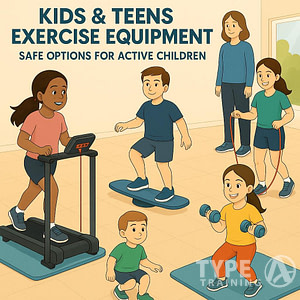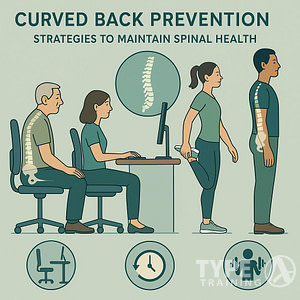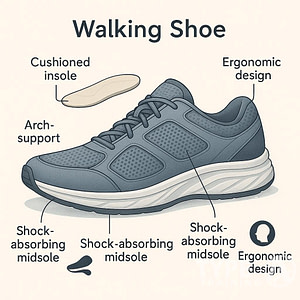Exercise right before bedtime can be a contentious topic, but new research provides clarity on how to do it effectively. Engaging in specific exercises can help you fall asleep faster and improve the quality of your sleep.
One of the best exercises to do before bed is the wall squat. You use a wall to support your back as you slide into a sitting position, holding for 10 seconds before standing up again.
Gentle routines such as light stretching and yoga can also be beneficial.
Popular posts:
For instance, bringing your right knee into your chest and hugging it can stretch your lower back and hips, which may help in relaxing your muscles and mind.
On the other hand, more intense workouts, like a challenging gym session, might disrupt your sleep patterns, so it’s best to keep these sessions for earlier in the day.
Nighttime exercising can also contribute to a better sleep cycle over time. Exercise like aerobic activities in the morning stimulates melatonin release earlier and adjusts your circadian rhythm, making it easier to fall asleep at night. Integrating these mindful movements into your evening routine can significantly impact how well and how quickly you fall asleep, ensuring a peaceful night’s rest.
Understanding Sleep and Exercise
Exploring the connection between sleep and exercise can provide valuable insights into how physical activity impacts your rest. Grasping the science behind sleep and how exercise influences its quality is crucial.
The Science of Sleep and Its Phases
Sleep consists of multiple stages, each playing a vital role in your overall health.
Broadly, sleep is divided into Non-REM (NREM) and REM stages.
NREM sleep includes three phases. The first is a light sleep, where you transition from wakefulness.
In the second stage, your body enters a period of light sleep, characterized by slower heart rates and lower body temperatures.
The third stage is deep sleep or slow-wave sleep, crucial for restorative processes.
REM sleep is marked by rapid eye movement, vivid dreams, and increased brain activity. This stage is critical for emotional regulation and memory consolidation. Balancing these phases ensures optimal sleep efficiency, affecting how refreshed you feel upon waking.
The Relationship Between Exercise and Sleep Quality
Exercise has a profound impact on sleep quality. According to a review in Sports Medicine, engaging in physical activity before bed can enhance sleep quality if it’s not too intense and ends more than an hour before bedtime.
Regular exercise promotes deeper, more refreshing sleep by increasing total sleep time and reducing the time it takes to fall asleep. It also influences your circadian rhythm, aligning your body’s natural sleep-wake cycles. However, avoid strenuous activities too close to bedtime to prevent disruption of restful sleep phases.
Research from BMJ Open Sports and Exercise Medicine supports that evening exercise doesn’t necessarily disrupt sleep quality. In fact, incorporating light resistance exercises can be beneficial.
Ideal Exercises Before Bedtime
Engaging in low-impact exercises, yoga, stretching, and breathing techniques before bed can help improve sleep quality. Each type of exercise has unique benefits that contribute to relaxation and promote a restful night.
Low-Impact Exercises for Relaxation
Low-impact exercises like wall squats can be particularly effective.
Position yourself with your back against a wall, feet shoulder-width apart and 1 to 2 feet away from the wall. Slide down into a sitting position and hold for about 10 seconds. Repeat 10 times.
These exercises help to gently tire your muscles without causing overstimulation. They allow for gradual relaxation, making it easier for your body to transition into sleep mode.
Yoga and Stretching
Yoga is beneficial in promoting relaxation.
Poses such as savasana, where you lie flat on your back with arms at your sides, help to release tension. Incorporate stretches like the forward bend or child’s pose to further relax your body.
Regularly attending a yoga class can deepen your practice, but simple poses at home are also effective. Focus on slow, deliberate movements and hold each pose for several breaths to maximize the calming effects.
Breathing and Meditation Techniques
Breathing exercises and meditation can significantly reduce stress and prepare your mind for sleep.
Techniques such as guided imagery or deep breathing exercises help to slow your heart rate. Inhale slowly through your nose, hold, and exhale through your mouth.
Meditation practices like mindfulness can be integrated with breathing exercises for added benefit. This combination not only calms your mind but also creates a sense of overall well-being, making it a practical addition to your nightly routine.
The Timing of Exercise
Understanding when to exercise can significantly impact your sleep quality and overall health. Factors such as how close to bedtime you work out and your natural sleep patterns play important roles.
How Close to Bedtime Should You Exercise?
Exercising too close to bedtime can affect your ability to fall asleep.
Some experts recommend avoiding high-intensity workouts in the late evening, as they can elevate your heart rate and core temperature.
Light to moderate exercises, such as yoga or stretching, are usually more suitable for nighttime routines. These exercises can help you relax and prepare for sleep without overstimulating your body.
A recent study found that people who did light workouts before bed experienced improved sleep quality.
Adjusting Exercise Time Based on Sleep Patterns
Your natural sleep patterns, or circadian rhythms, can heavily influence the best time for you to exercise.
For instance, if you are a morning person, morning workouts may be more beneficial as they align with your peak energy levels.
For those who struggle with falling asleep at night, doing aerobic exercise in the morning or afternoon can help.
This practice encourages an earlier release of melatonin and helps regulate your body’s internal clock, making it easier to fall asleep at a desired time according to the Sleep Foundation.
Early Birds vs. Night Owls: Tailoring Your Routine
People have different peak times for productivity and energy, commonly referred to as early birds and night owls.
If you’re an early bird, you might find that exercising in the morning sets a productive tone for your day and helps regulate your sleep-wake cycle.
Night owls may benefit from scheduling workouts later in the day when their energy levels are higher. However, it’s important to choose exercises that don’t interfere with sleep.
Avoiding high-intensity workouts late in the evening is generally a good practice for night owls. Instead, stick to lighter activities like brisk walking or stretching.
Intensity and Type of Exercise
Choosing the right intensity and type of exercise before bed can significantly impact your sleep quality.
This section discusses the potential effects of different exercise intensities and types, including high-intensity workouts, moderate versus vigorous exercise, and the benefits of strength training at night.
The Impact of High-Intensity Workouts
High-intensity workouts, such as HIIT (High-Intensity Interval Training), can be very effective for cardiovascular health and calorie burning.
However, performing these exercises right before bed may not be the best choice. According to research, a single session of intense exercise close to bedtime can delay sleep onset and reduce sleep quality due to increased heart rate and adrenaline levels.
If you prefer high-intensity workouts, it’s advisable to complete them at least a few hours before going to sleep. This timing allows your body to return to a calmer state, ensuring a better night’s rest.
Moderate vs. Vigorous Exercise Before Bed
Moderate-intensity exercise, such as leisurely jogging or cycling, appears to be more suitable for pre-bedtime routines. Studies indicate that engaging in moderate exercises before bed can help you fall asleep faster and enjoy deeper sleep.
Unlike high-intensity workouts, moderate exercises do not overly stimulate the body, making them a better fit for evening activities.
In contrast, vigorous exercises like fast running or heavy lifting can have the opposite effect if done too close to bedtime. They elevate your energy levels and core temperature, which may interfere with falling asleep quickly.
Thus, moderate-intensity exercise is often recommended for a more restful sleep.
Strength Training and Its Benefits at Night
Strength training, including resistance exercises like wall squats or push-ups, offers multiple benefits at night. These workouts can help in muscle recovery and growth while also supporting overall physical health.
When performed at a moderate intensity, strength training can contribute to lowering stress levels and improving sleep quality.
For instance, exercises such as wall squats can be both effective and easy to perform before bed. This type of moderate-intensity resistance exercise helps you maintain muscle tone without overly tiring your body, making it easier to drift into a peaceful sleep.
Physical and Mental Health Connection
Engaging in physical exercise before bed can significantly enhance both your physical and mental health. Regular fitness routines contribute to improved sleep quality, reduced stress, and a better mood, benefiting people with sleep disorders like insomnia and issues such as anxiety and depression.
Exercise, Stress, and Sleep Disorders
Exercise plays a crucial role in reducing stress and mitigating sleep disorders. Engaging in physical activities helps to release endorphins, which act as natural stress relievers.
Lower stress levels contribute to better sleep quality, making it easier to fall asleep and stay asleep.
People with insomnia or other sleep disorders often find relief through moderate, pre-sleep exercise. Activities like light resistance training can improve sleep duration and efficiency.
Consistent exercise also helps in regulating your body’s internal clock, which aids in achieving a more restful night’s sleep.
Improving Mood and Mental Wellbeing Through Fitness
Exercise is well-documented for its positive effects on mood and mental wellbeing. Physical activity stimulates the production of serotonin and dopamine, which are crucial for mood regulation.
This can alleviate symptoms of depression and anxiety, making you feel happier and more relaxed.
Fitness routines like yoga and stretching before bed are particularly beneficial. They not only calm your mind but also prepare your body for sleep.
Incorporating these exercises can lead to increased relaxation and a better overall mood, ultimately supporting both mental health and sleep quality. For detailed routines, consider exploring exercises for better sleep.
Optimizing Your Sleep Environment
Achieving quality sleep involves more than exercises before bed. Adjusting your sleep environment can significantly impact your core body temperature and overall bedroom ambiance, ensuring better shut-eye. The right conditions promote sleep quality and help you maintain a restful night.
Bedroom Conditions for Better Sleep
A comfortable bedroom environment is essential for optimal sleep. Begin by setting the ideal room temperature between 60-67°F (15-19°C).
This helps regulate your core body temperature, making it easier to fall and stay asleep.
Keep your bedroom dark. Use blackout curtains or shades to eliminate external light sources. Alternatively, a sleep mask can also help.
Reducing noise is equally important; consider earplugs or a white noise machine.
Invest in a high-quality mattress and pillows. These support your body properly and enhance comfort.
Opt for breathable bedding, such as cotton or linen, which helps maintain a consistent body temperature.
Declutter your bedroom to create a serene space that encourages relaxation and restful shut-eye. Implementing these adjustments can make a significant difference in your sleep quality.
Expert Insights and Studies
Recent research has significantly changed the long-held beliefs about the effects of pre-sleep exercise. Experts now provide nuanced recommendations that depend on the type and timing of exercise.
Recent Findings on Exercise and Sleep
Studies such as the one published in the European Journal have challenged the belief that exercise before bed negatively impacts sleep. This meta-analysis reviewed data from 15 studies to understand how intense exercise affects sleep quality.
Researchers found that moderate exercise can improve sleep onset and duration.
Dr. Anis Rehman, an internal medicine physician, noted that factors such as exercise intensity and timing matter most.
For example, vigorous activities like HIIT can be disruptive if done within an hour of bedtime.
The review in BMJ Open Sport & Exercise Medicine echoes these findings, suggesting that light to moderate activities don’t have adverse effects on sleep, potentially enhancing sleep quality.
Professional Recommendations for Bedtime Routines
Experts, including Danielle Pacheco and Dr. Anis Rehman, recommend specific exercises for better sleep. Wall squats and hip bridges, as mentioned in the Sleepopolis article, are effective owing to their moderate intensity and relaxation benefits.
The American College of Sports Medicine advises avoiding intense workouts close to bedtime. Instead, light stretching or yoga poses are better options.
Their editorial team recommends performing these exercises at least one to two hours before sleeping to prevent any sleep disturbances. Reliable routines can help you maintain consistent sleep patterns, enhancing overall sleep quality.
Creating Your Personalized Bedtime Exercise Plan
Developing a personalized bedtime exercise plan requires assessing your current fitness level, finding the best ways to integrate exercise into your nightly routine, and possibly consulting with a personal trainer for tailored advice. Here’s how to create a plan that enhances your performance and promotes better sleep.
Evaluating Your Current Fitness Level
Start by assessing your current fitness level. Consider your age, overall health, and any existing medical conditions.
- Fitness Assessment: Conduct a basic fitness test. This might include testing your strength, flexibility, and cardiovascular endurance.
- Set Goals: Clearly define what you hope to achieve with your bedtime workout routine. This can range from improving sleep quality to increasing overall fitness.
If you’re unsure about where to start, consider consulting a personal trainer for an initial assessment.
Integrating Exercise into Your Evening Routine
To incorporate exercise into your evening routine effectively, consider activities that complement your lifestyle and don’t disrupt your sleep.
- Activity Types: Opt for light to moderate-intensity exercises such as yoga or resistance training. Avoid high-intensity workouts that might hinder sleep duration and REM sleep quality.
- Timing: Aim to finish your workout at least two hours before bed to allow your body temperature to cool down, promoting better sleep quality.
A balanced routine could include stretching, light cardio, and strength training exercises to help stabilize your body.
Consulting with a Personal Trainer
If you’re new to working out or have specific fitness goals, consulting with a personal trainer can be highly beneficial.
- Customized Plans: Personal trainers can create custom routines that match your fitness level and objectives.
- Technique and Form: They ensure you perform exercises correctly, reducing the risk of injury.
- Motivation and Accountability: Working with a trainer can keep you motivated and accountable to your workout routine.
Whether you’re aiming for better sleep or improved fitness, a personal trainer can guide you in creating a plan that fits your unique needs.
Best Exercises to Do Right Before Bed
Adding light to moderate-intensity exercises to your evening routine can improve your sleep quality. Try incorporating these activities before bedtime for better sleep.
Wall Squat
Stand with your back against a wall, feet shoulder-width apart. Slide down into a sitting position, hold for 10 seconds, then rise slowly. Repeat 10 times.
Knee Raises
Stand next to a chair for balance. Lift one knee to hip height and repeat 10 times for each leg.
Resistance Band Curls
Stand on a resistance band, grasp the ends, and curl your arms up while keeping your elbows close to your sides. Repeat for 30-60 seconds.
Calf Raises
Stand with your feet hip-width apart and raise your heels, then lower them. Do this for 20 seconds, rest, and repeat.
Yoga Poses
Gentle yoga poses like Child’s Pose, Legs Up the Wall, and Corpse Pose can help relax your body and mind.
Standing Hip Extensions
Stand tall, lift one leg straight back without bending the knee. Hold briefly, then return to the starting position. Repeat 10 times for each leg.
Chair Squats
Sit and stand from a chair repeatedly for short 20-second bursts to improve circulation and muscle tone.
Frequently Asked Questions
These answers provide insights on the best practices and considerations for exercising right before bed. Learn about the most effective workouts, their impact on sleep, and the timing of your pre-sleep routine.
What type of workout routine is most effective right before sleeping?
Moderate-intensity workouts, including light stretching and body-weight exercises, are effective. These exercises help relax your muscles and prepare your body for sleep without causing overstimulation.
Can evening exercises improve overall sleep quality?
Yes, engaging in moderate physical activities before bed can improve sleep quality. Studies, such as those found here, suggest that non-vigorous exercises enhance sleep when performed more than an hour before bedtime.
What are the potential drawbacks of late-night physical activity?
Intense workouts late at night may increase heart rate and adrenaline levels, making it harder to fall asleep. It’s important to keep the intensity low to moderate to avoid any sleep disturbances.
How long before bedtime should one engage in exercise?
It is recommended to finish your workout at least one hour before bed to give your body sufficient time to wind down. This ensures that your heart rate and adrenaline levels return to normal.
Are there specific exercises recommended for pre-sleep routines?
Exercises like wall squats and hip bridges are beneficial. For example, wall squats involve sliding down a wall into a sitting position, holding for 10 seconds, and repeating 10 times.
Does stretching or yoga before bed facilitate better sleep?
Stretching and yoga can effectively promote better sleep by relaxing your muscles and mind.
Simple stretches, such as standing quad stretches, can be particularly helpful. So can upper back and neck releases.

















